Everything You Need to Know
About Surface Piercing:
Popular Zones, Procedure, and Aftercare
Surface piercing is a bold way to express yourself and highlight the beauty of the body.
This type of piercing is placed horizontally under the skin, with both ends on the same level, creating a visible decorative element on flat areas of the body where standard piercings can’t be done. Its versatility makes surface piercing popular among those who love minimalist jewelry and those who prefer a more extravagant style. Let’s explore the key features of this piercing, ideal placement areas, and the best ways to care for it.
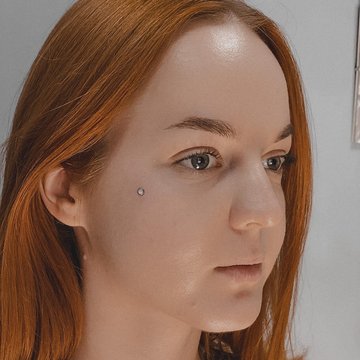
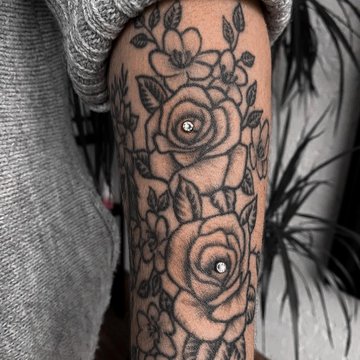
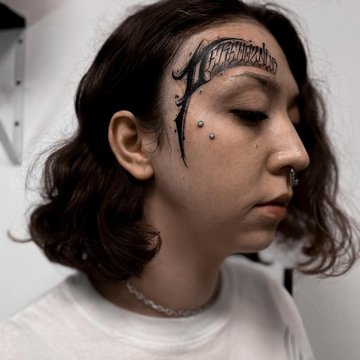
What to Know About
Surface Piercing: Key Features to Consider
Surface piercing involves inserting a barbell under the skin with both ends secured outside, giving a ‘floating’ jewelry effect.
Unlike traditional piercings, a surface piercing doesn’t pass through to the other side of the skin, remaining beneath the surface. Precision is essential to avoid skin tension, shifting risks, or discomfort. The jewelry is parallel to the skin and fixed on both ends with decorative elements.
Popular jewelry options for surface piercings include barbells with balls, stones, or small decorative elements that sit close to the skin without applying extra pressure. Hypoallergenic materials, typically surgical steel or titanium, are recommended to promote healing.
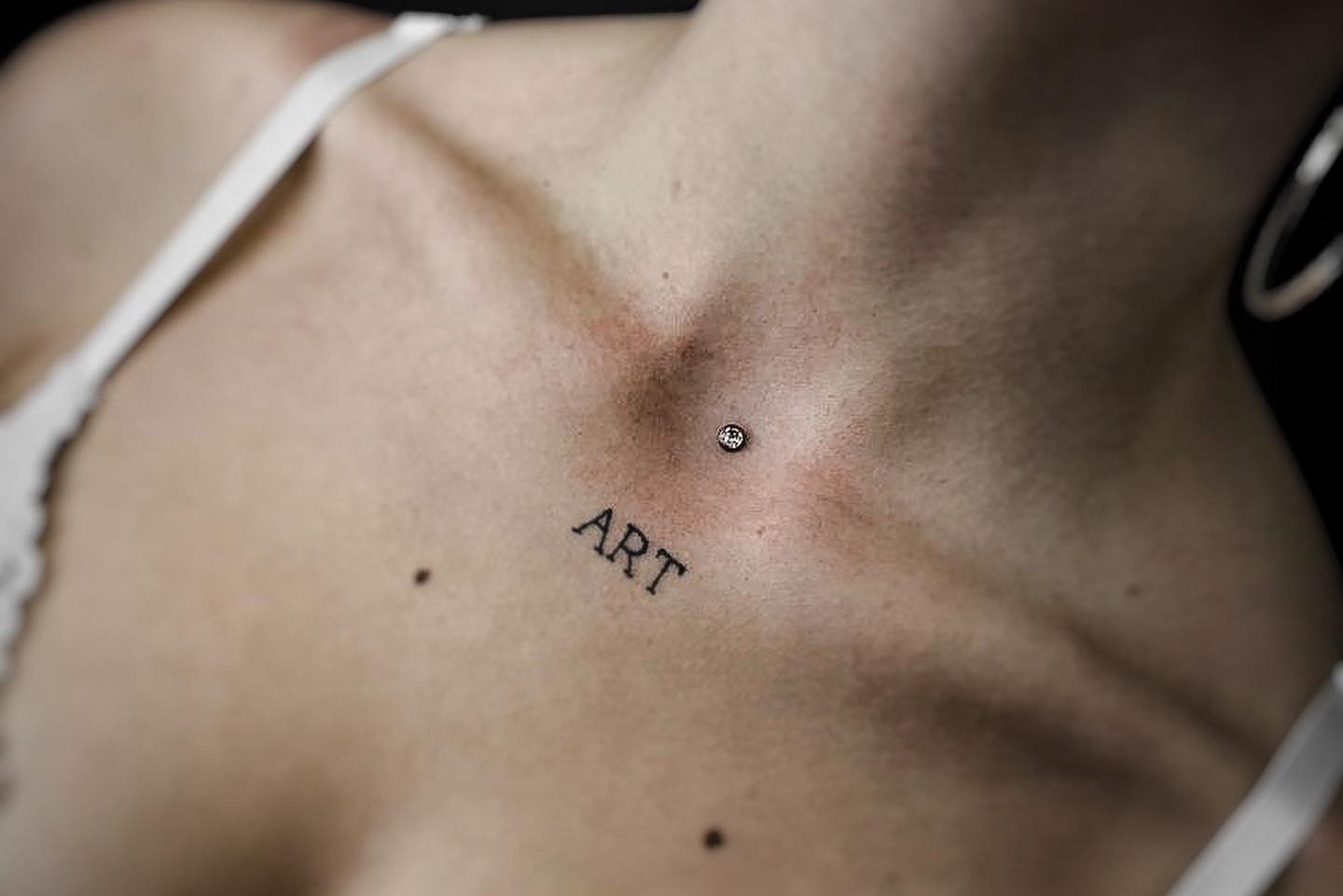
Ideal Placement Areas
for Surface Piercing
Surface piercings can be placed on various body areas with flat skin that isn’t subjected to constant friction.
Here are some of the most popular zones for this type of piercing:
- Back of the Neck
- A neck or nape piercing draws attention, especially if you have short hair or wear it up. This piercing is eye-catching and enhances the natural line of the neck.
- Collarbones
- Piercings along the collarbones add a refined touch to the body, enhancing natural curves. This placement is ideal for creating a romantic or elegant look, as collarbones are often visible.
- Chest and Décolletage
- A surface piercing on the chest or décolletage is delicate and attractive. One or multiple symmetrical piercings can enhance the neckline and add an elegant touch.
- Lower Back
- Piercings on the lower back are popular due to their aesthetic appeal. They look especially striking with open clothing or swimwear, adding a stylish touch to a summer look.
- Abdomen
- A surface piercing on the abdomen can be placed horizontally or vertically, depending on personal preference. Piercings in this area highlight the waistline and visually elongate the torso.


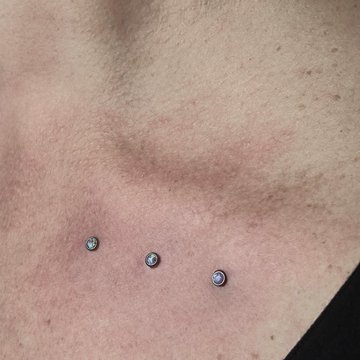
How Is Surface
Piercing Done?
The surface piercing procedure requires precision and skill to ensure the jewelry is correctly positioned, minimizing complications.
The main steps include:
- Disinfection and Marking
- The piercer thoroughly cleans and disinfects the chosen area. Marking is done to define the exact points for the piercing, ensuring symmetry and an aesthetically pleasing placement.
- Piercing and Barbell Placement
- A special needle or catheter is used to make two openings in the skin, and a barbell is inserted beneath the surface. The decorative ends stay outside, completing the look.
- Aftercare Instructions
- After the procedure, the piercer will explain how to care for the piercing to prevent infections and support healing.

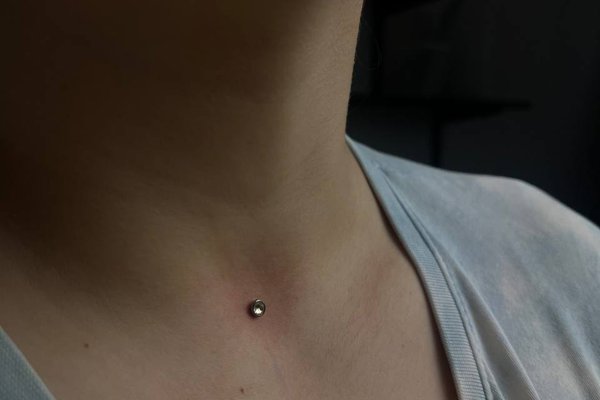
Aftercare for Surface
Piercing: Tips for Safe Healing
Due to its placement, surface piercing requires specific care to avoid irritation and reduce mechanical impact.
Here are some tips to help you take care of your piercing and ensure smooth healing:
- Regular Cleaning
In the first few weeks, it’s important to clean the piercing with an antiseptic solution twice a day to keep bacteria out and prevent infections. Be gentle around the jewelry to avoid shifting it. - Wear Suitable Clothing
While the piercing is healing, avoid tight clothing, belts, or straps that might press against the jewelry. Opt for loose fabrics that won’t touch the pierced area to prevent rubbing and displacing the barbell. - Limit Water Exposure
Avoid exposing the piercing to water in pools, open water, and saunas during healing. Water can contain bacteria that might cause infections in the piercing. - Practice Good Hygiene
Wash your hands thoroughly before touching the piercing. Refrain from moving or rotating the jewelry yourself, as this can irritate the skin and delay healing.
Conclusion
Surface piercing is a stylish way to add a unique, expressive element to your look. If you want to try this type of piercing, consult a professional studio like VEAN TATTOO, where skilled piercers can help you choose the right placement, perform the procedure carefully, and advise you on aftercare.
This piercing style is perfect for those who enjoy standing out and creating unconventional looks. With proper care and gentle handling, surface piercings can retain their aesthetic appeal, making it a sophisticated accent in your personal style.

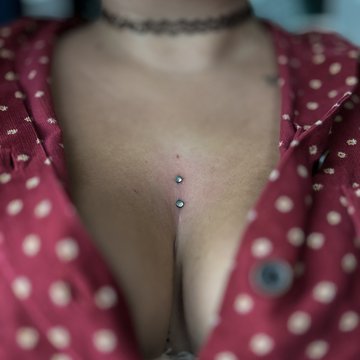
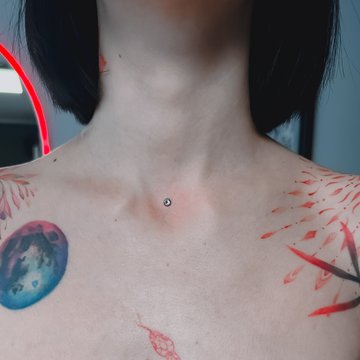


 Create a sketch in the VEAN TATTOO AI generator
Create a sketch in the VEAN TATTOO AI generator




